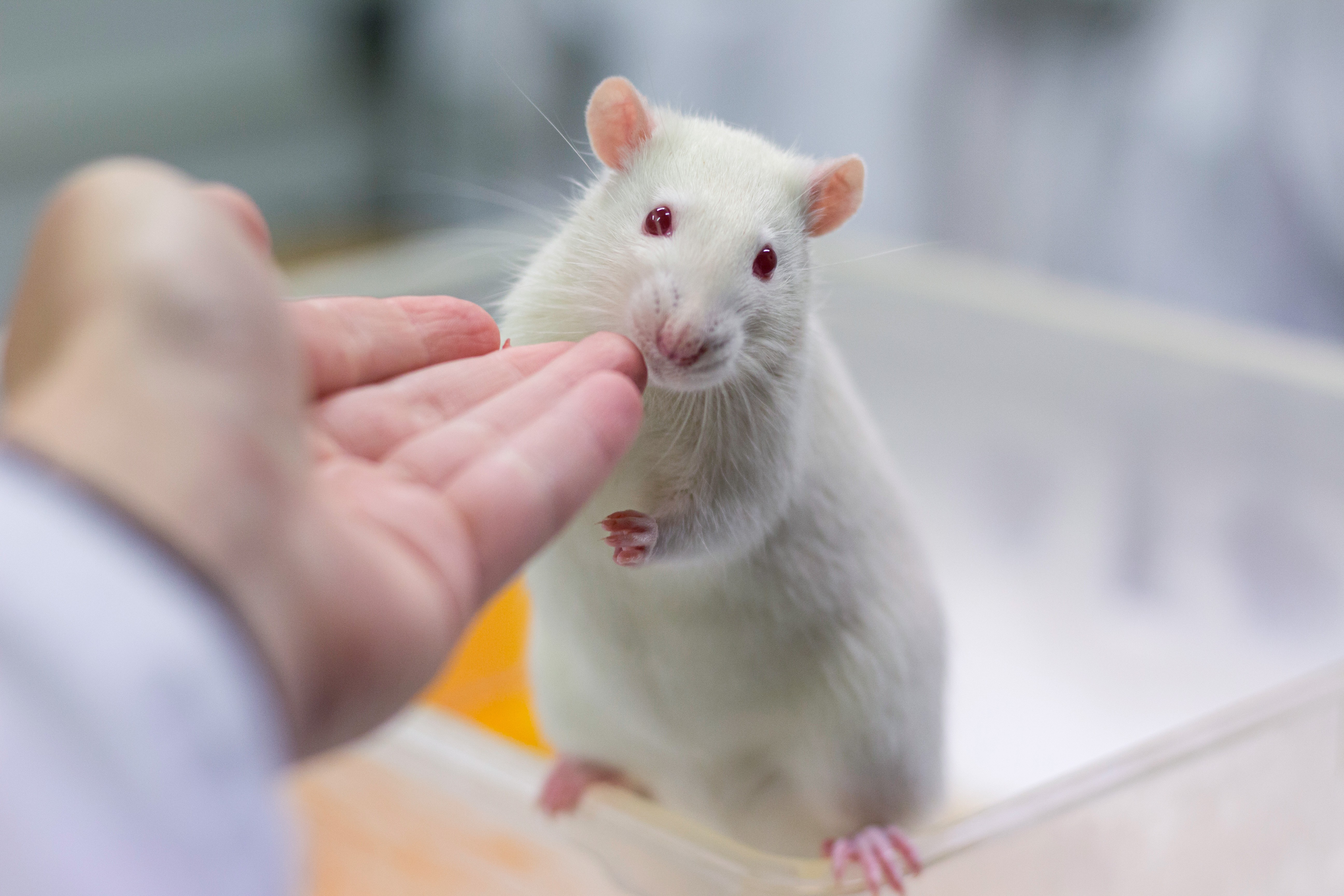"We show that you can train laboratory animals"
4 years agoEsther Langen is an assistant professor at the Population Health Sciences department of the Faculty of Veterinary Medicine, Utrecht University. She is involved in courses on animal behavior and welfare and is the course leader of the Laboratory Animal Science course. For the Laboratory Animal Science course, she and her students gained experience in training laboratory animals that are used in education.
Why did you train laboratory animals?
Training laboratory animals can be a way to refine parts of a study. By training laboratory animals you increase the predictability for animals and you can ensure that they cooperate better. This makes it easier for researchers to perform certain actions and less stressful for the animals to undergo them. We perform actions that are invasive, but by training the animals you don't have to do a full fixation, for example.
How does training laboratory animals work?
You start by thinking about how you want to train the animals and what the important components of your research are. It is also important to habituate your animals so that they are used to your presence and handling. Then you think about how you can divide the action you want to perform into small steps. For example, we trained rats for oral gavage. We started out small. The first step is for the rats to sit on a platform. The second step is that you touch them on the neck. The third step is holding the head. That way you always go one step further. You have to be very clear, for example by working with rewards. We rewarded the rats when they got close to the platform and at some point they made that connection.
How do you reward laboratory animals?
Usually food is used, but you can also use positive handling, such as petting, as a reward. You have to be sure that the animals see petting as rewarding. In animals that are not used to being petted, this can cause extra stress. For the rats and mice we use in education, we used peanut butter and candies from the pet store. When animals are used for research, you often have to provide a hygienically safe reward that fits within your study. Think of sucrose pellets or high-quality food that has undergone a heat treatment.
For which procedures is training useful?
Training laboratory animals is especially useful for procedures that you perform over a long period of time and repeatedly. If you have to administer an injection once, it is not practical to train an animal for this. The time investment does not outweigh the benefits. The training should not last longer than the trial. Suppose your experiment starts before an animal is born or just after birth, then you do not have the opportunity to train an animal. If these limitations are not there, and you have to perform a certain invasive procedure every day for an extended period of time, such as administering medication orally, then it is worth considering it. We keep the animals for education for a longer period of time, so training is almost always a good option for us.
What are the challenges you encountered?
The first challenge is that you have to be trained in animal training yourself. I experienced that myself, because I was not an expert in the field of training. Fortunately, a number of my colleagues were, they already knew more about it. Training laboratory animals seems simple, but there are a lot of things to keep in mind. If you make a mistake yourself, it can become very unclear for an animal, for example. You have to really practice training animals yourself. We are certainly not experts yet, because we have only done it once. Sometimes we were not clear enough with the reward or too late. Sometimes we were even a little too careful. We have also learned from these experiences.
Another challenge is the individual differences between animals. Some animals like it and others don't. Some animals also learn faster than others.
During training you also build a bond with the animals. This makes it difficult to kill an animal after an experiment. That certainly does something to you and can be a big disadvantage.
What are interesting developments in this area?
Our source of inspiration was RISE Research Institutes of Sweden. We saw the positive aspects of training laboratory animals. Larger animals, such as dogs, are already being trained for quite a while and nowadays more and more research is being done on training laboratory animals. Thanks to a publication by RISE, training laboratory animals is now becoming somewhat more well-known worldwide. Other research institutions are now also looking at the possibilities of training laboratory animals. That is a positive development. Training laboratory animals is still in its infancy, but fortunately it is receiving more and more attention. In the past, this was still a point of discussion. I hope that we will think more critically about the possibilities of training laboratory animals. We want to show that you can train laboratory animals and are happy to give advice.


